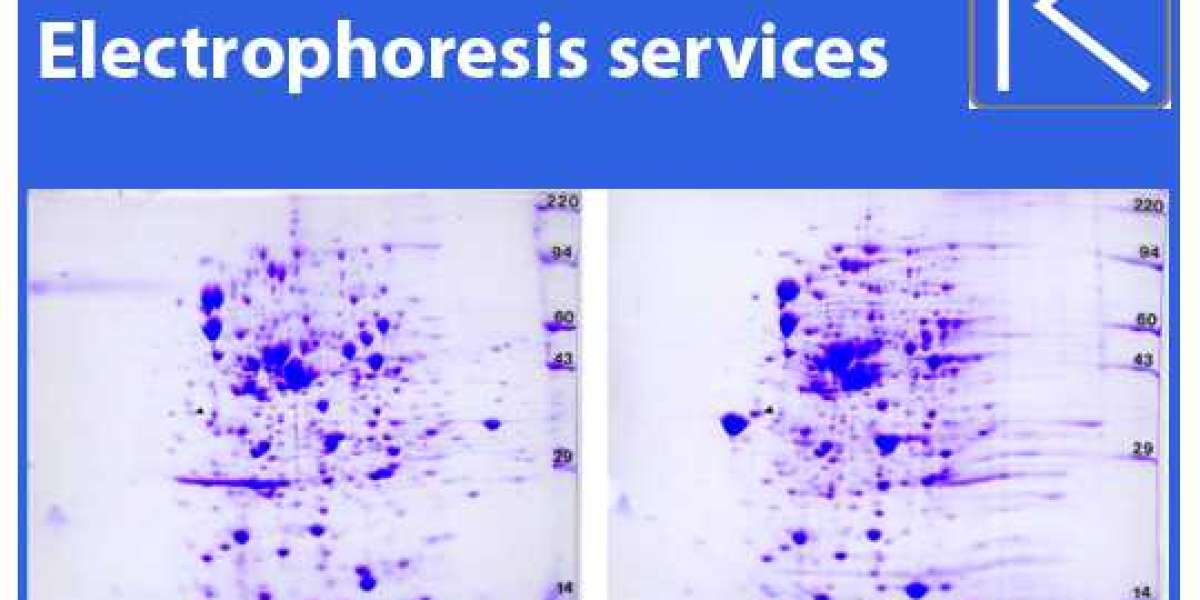With its ability to separate complex protein mixtures based on both charge and size, 2D electrophoresis offers you a powerful window into the intricate world of protein analysis. At Kendrick Labs, this cutting-edge technique is honed to perfection, allowing you to unravel the mysteries of your samples with precision and accuracy. Discover how this innovative tool can elevate your research and deepen your understanding of proteins like never before.
The Basics of 2D Electrophoresis
What is 2D Electrophoresis?
Basics of 2D electrophoresis involve a powerful method for separating complex protein mixtures based on their isoelectric points and molecular weights. By combining two different separation techniques in two dimensions, this technique allows you to achieve a high level of resolution and analyze hundreds to thousands of proteins in a single gel.
Principles of Separation
Separation in 2D electrophoresis is based on the fact that proteins will move in an electric field based on their charge and size. In the first dimension, proteins are separated according to their isoelectric points using an immobilized pH gradient. Then, in the second dimension, proteins are separated by their molecular weights through SDS-PAGE (sodium dodecyl sulfate polyacrylamide gel electrophoresis).
A key feature of 2D electrophoresis is the ability to separate proteins that may have similar molecular weights but different isoelectric points, or vice versa. This dual separation approach provides you with a comprehensive view of the protein composition in your sample, making it a valuable tool in proteomics research.
High-Resolution Protein Separation
Advantages of 2D Electrophoresis over 1D
If you are looking to achieve high-resolution protein separation, 2D electrophoresis has significant advantages over traditional 1D methods. In 1D electrophoresis, proteins are separated based on a single property, such as size or charge. However, in 2D electrophoresis, proteins are separated first by their charge in one direction and then by their size in another direction, allowing for a more precise separation of complex protein mixtures.
Resolving Power and Protein Detection
Over the years, 2D electrophoresis has become a powerful technique for protein analysis due to its high resolving power and sensitive protein detection capabilities. This method can separate thousands of proteins in a single gel, providing a comprehensive view of the protein profile within a sample. Additionally, with various staining and detection methods available, you can detect proteins at very low levels, making it suitable for a wide range of applications in proteomics research.
Resolving power in 2D electrophoresis refers to the ability of the technique to separate proteins with different isoelectric points (pI) and molecular weights. The high resolving power of 2D gels allows you to distinguish closely related protein isoforms and detect post-translational modifications that may not be resolved using other methods. This level of detail in protein separation and detection is crucial for understanding the complex protein composition of biological samples.
Protein Identification and Characterization
Mass Spectrometry and Protein Identification
With the advent of mass spectrometry techniques, protein identification has become more precise and efficient. Mass spectrometry allows you to analyze proteins based on their mass-to-charge ratios, providing valuable information about their identities. By comparing these mass spectra to databases of known proteins, you can accurately identify the proteins in your sample.
Post-Translational Modifications and Protein Function
Any modifications that occur to a protein after it is synthesized are known as post-translational modifications (PTMs). These modifications can profoundly impact a protein's function, stability, and interactions with other molecules. By studying PTMs using techniques like 2D electrophoresis combined with mass spectrometry, you can gain insights into the biological roles of proteins and how they contribute to various cellular processes.
The field of post-translational modifications is vast and continuously expanding, with researchers discovering new types of modifications and their effects on protein function. Understanding these modifications is crucial for unraveling the complexities of cellular signaling pathways and regulatory mechanisms.
Applications in Proteomics Research
Biomarker Discovery and Disease Diagnosis
Now, 2D electrophoresis is a powerful tool for biomarker discovery and disease diagnosis in proteomics research. By analyzing protein expression patterns in different samples, you can identify potential biomarkers that are specific to certain diseases or conditions. These biomarkers can be used for early detection, monitoring disease progression, and developing targeted treatments.
2D electrophoresis allows you to compare protein profiles between healthy and diseased samples, enabling you to pinpoint differences that may indicate the presence of a particular disease. By identifying and validating biomarkers using this technique, you can contribute to advancements in personalized medicine and improve patient outcomes.
Cellular Signaling Pathways and Protein Interactions
Any proteomics research focused on cellular signaling pathways and protein interactions can benefit greatly from 2D electrophoresis. This technique allows you to map out complex protein networks within cells, unraveling the intricacies of signaling cascades and protein interactions. By analyzing changes in protein expression and modifications, you can gain valuable insights into how cells respond to stimuli and communicate with each other.
Proteomics research utilizing 2D electrophoresis can uncover key players in cellular signaling pathways, such as signaling kinases, phosphatases, and transcription factors. By understanding how these proteins interact and regulate cellular processes, you can unravel the molecular mechanisms underlying various physiological and pathological conditions. This knowledge is imperative for developing targeted therapies that modulate specific protein interactions to treat diseases effectively.
Advantages of 2D Electrophoresis in Protein Analysis
Despite the many techniques available for protein analysis, 2D electrophoresis stands out as a powerful tool with unique advantages. One key benefit is the high-throughput analysis and automation capabilities it offers.
High-Throughput Analysis and Automation
Analysis with 2D electrophoresis allows for the simultaneous separation of a large number of proteins in a single gel. This means you can analyze multiple samples at once, saving you time and enabling you to generate comprehensive protein profiles efficiently. Additionally, advancements in automation technology have streamlined the process, making it easier to handle high sample volumes and ensuring reproducibility in results.
To wrap up
Now, as you have learned, 2D electrophoresis is a powerful protein analysis tool that allows you to separate and visualize a large number of proteins in a sample. This technique provides valuable information about the proteins present in a sample, such as their size, charge, and abundance. With its high resolution and ability to detect post-translational modifications, 2D electrophoresis is a versatile tool that can be used in a wide range of applications, from biomarker discovery to studying protein-protein interactions.
By understanding the principles behind 2D electrophoresis and the ways in which it can be optimized for different research questions, you can harness the full potential of this technique in your own protein analysis experiments. Armed with this knowledge, you are well-equipped to take on the challenges of studying the complex world of proteins and their functions, opening new doors for discovery and innovation in the field of proteomics.
Original Source: https://kendricklabs.blogspot.com/2024/07/what-makes-2d-electrophoresis-powerful.html








